A new 32 inch gaming monitor from MSI arrives in the Techtoyreviews portfolio for review. This MSI curved monitor comes with a VA panel, QHD resolution, and 165Hz refresh rate. And these are only a small part of its capabilities. So, let us look at the detailed MSI Optix G321CQP review below.
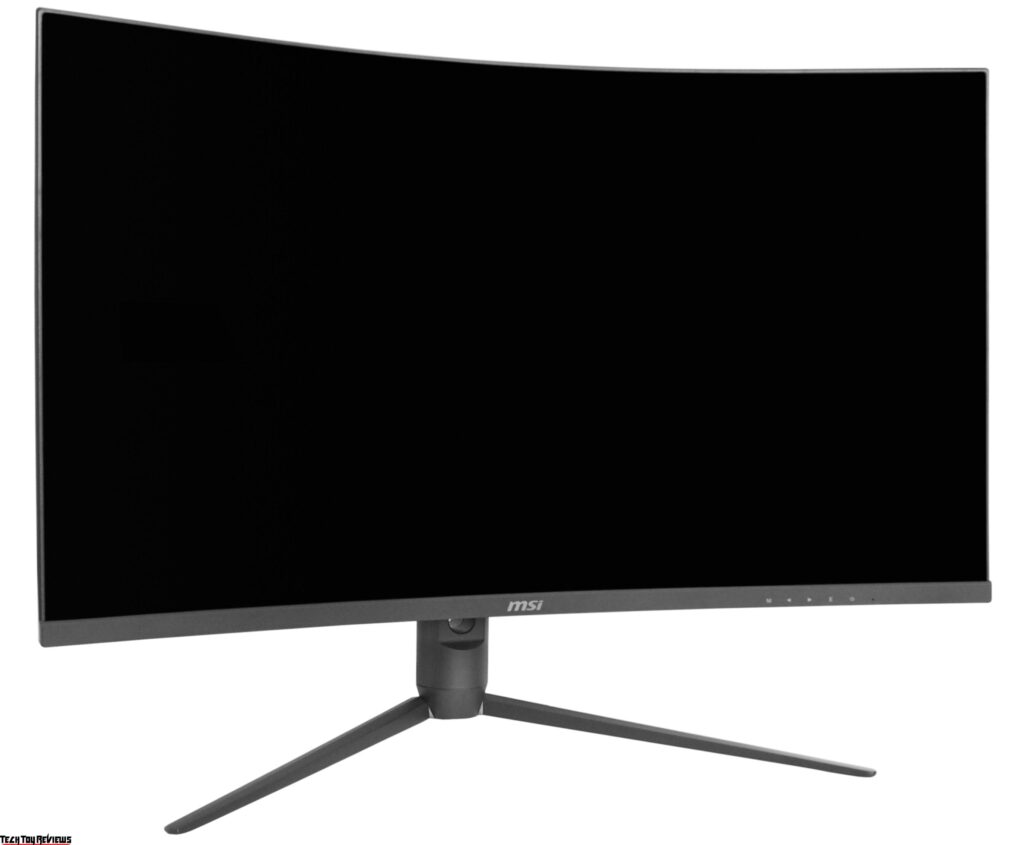
MSI Optix G321CQP specifications
- Display: 31.5-inch Anti-glare VA panel
- Resolution: 2560×1440 (WQHD)
- Curvature: 1000R
- Refresh rate: 165Hz
- Refresh time: 1ms(MPRT)
- Brightness: 250 nits
- Viewing angle: 178°(H) / 178°(V)
- Aspect ratio: 16:9
- Pixel Density: 93 PPI
- Contrast ratio: 2500:1
- Active display area: 697.344(H)x392.256(V)
- Pixel pitch: 0.2724(H)x0.2724(V)
- Colors: 1.07B (8 bits + FRC)
- DCI-P3 / SRGB: 85% / 110%
- DCR: 100000000:1
- Ports: 1x Display Port (1.2a), 2x HDMI (2.0b), 1 x Earphone out
- Features: Kensington lock, Frameless design, Console mode, FreeSync Premium
- VESA mount: 75 x 75 mm
- Stand: Tilt (-5° ~ 20°), Swivel (-30° ~ 30°), Pivot (-5° ~ 5°), Height (0 – 90mm)
- Dimensions: 704.6 x 558.4 x 287.0 mm
- Weight: 6.95 kg / 15.32 lbs
MSI Optix G321CQP Review
Design
The MSI Optix G321CQP is a model from the “G” series whose representatives generally have the best value for money. The display received a solid appearance and a three-sided frameless design.
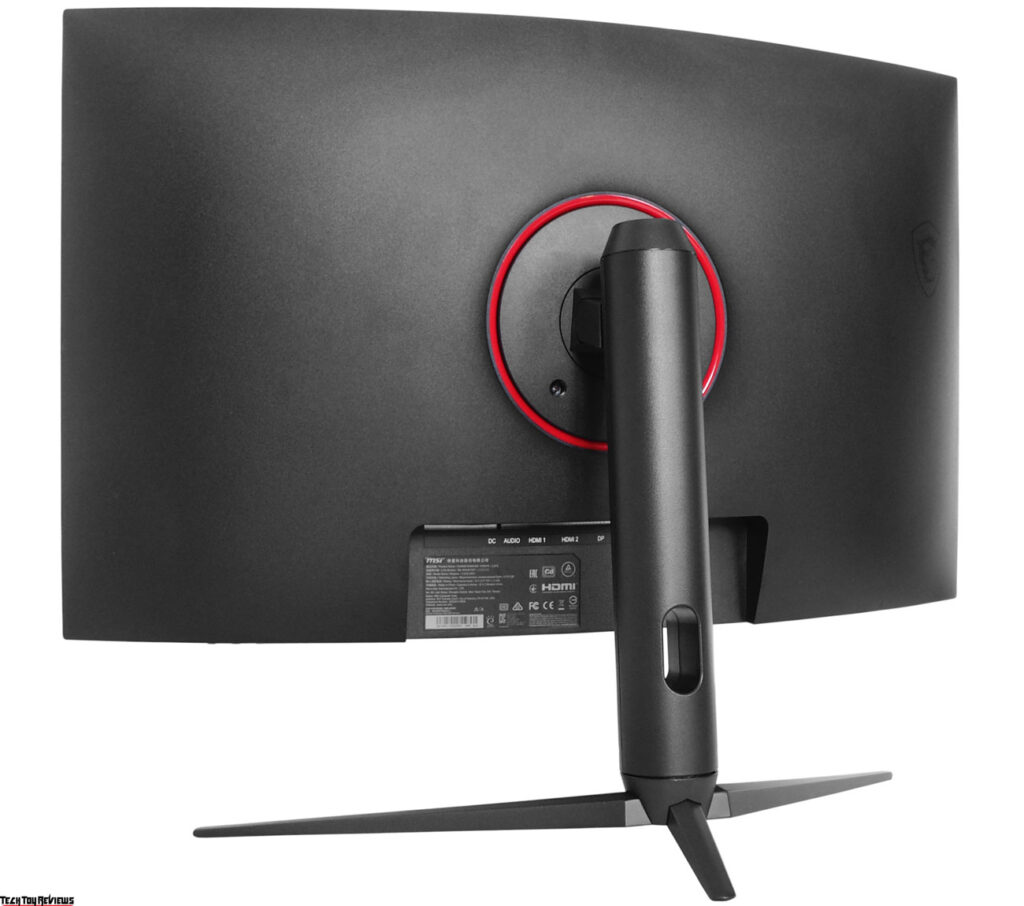
The rear part of the monitor is made of matte plastic. The only color accent is the red circle at the center of the back to enhance the stand. On the right side, you will see a symbol of MSI Dragon.

The curvature of the panel is 1000R, which makes the monitor look very impressive. According to the manufacturer, this reduces eye strain and enhances the sensations during gameplay. Users accustomed to flat monitors may require some adaptation.
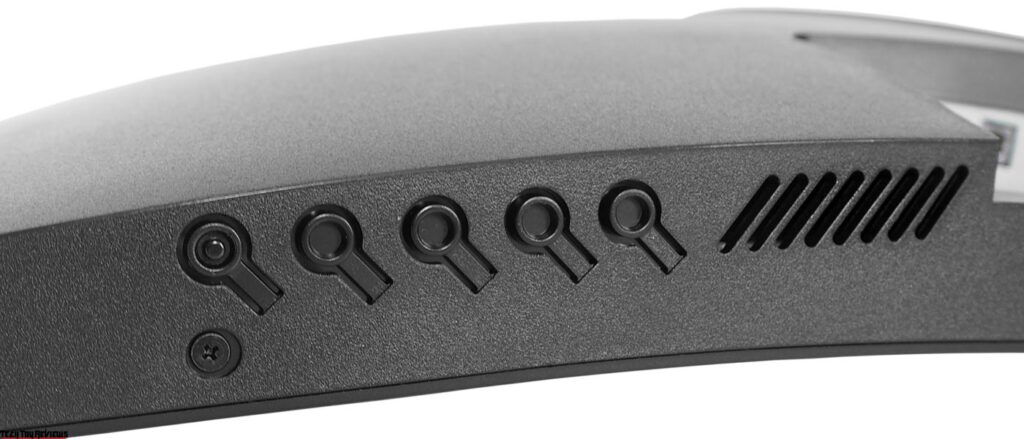
Menu buttons are located on the bottom of the case. A solid metal leg is attached to the display with a few screws.
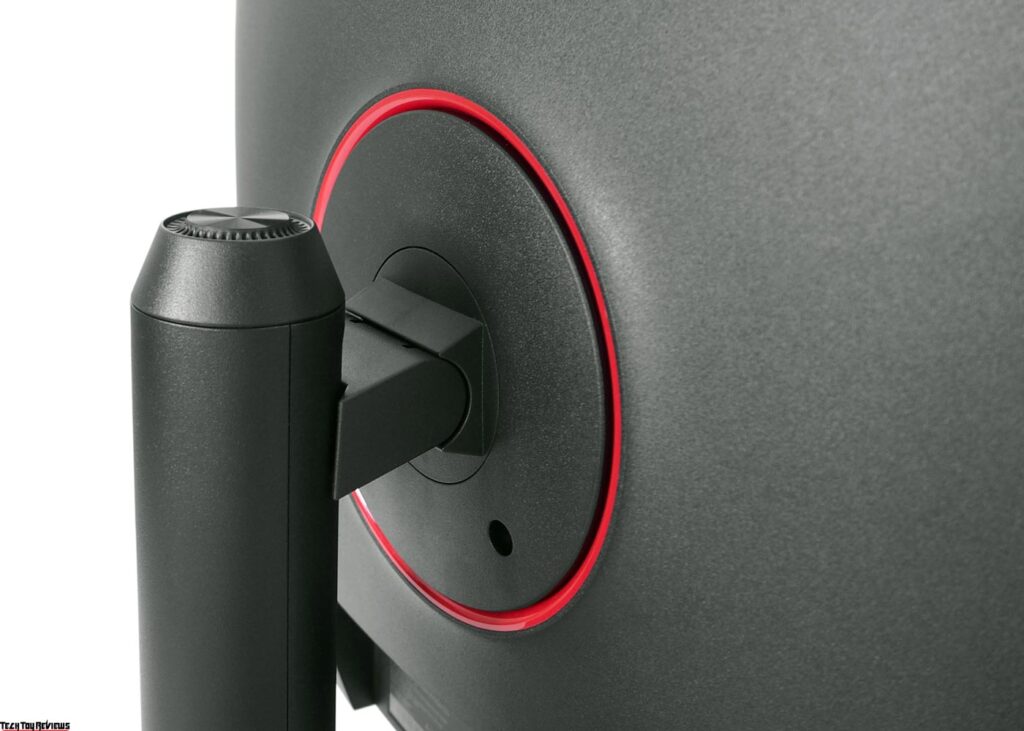
Its impressive dimensions require a countertop with a depth of at least 65 cm. Biggest and best. However, this applies to all curved panels with this type of curvature.
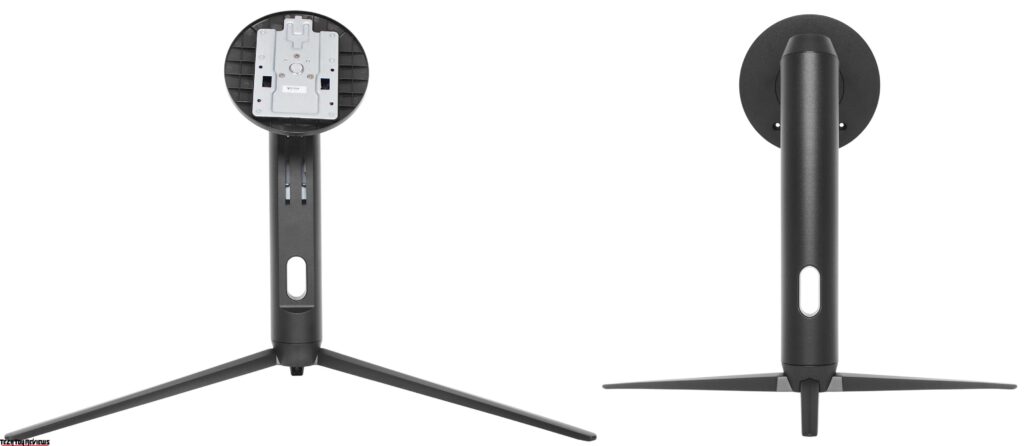
The ergonomic stand allows you to change the height (up to 10 cm) and the angle of tilt (from -5 ° to 20 °). But most of all, we were pleased with the possibility of horizontal rotation by 30 °. For obvious reasons, there is no portrait mode, but there are small adjustments for aligning the monitor in the horizontal plane.
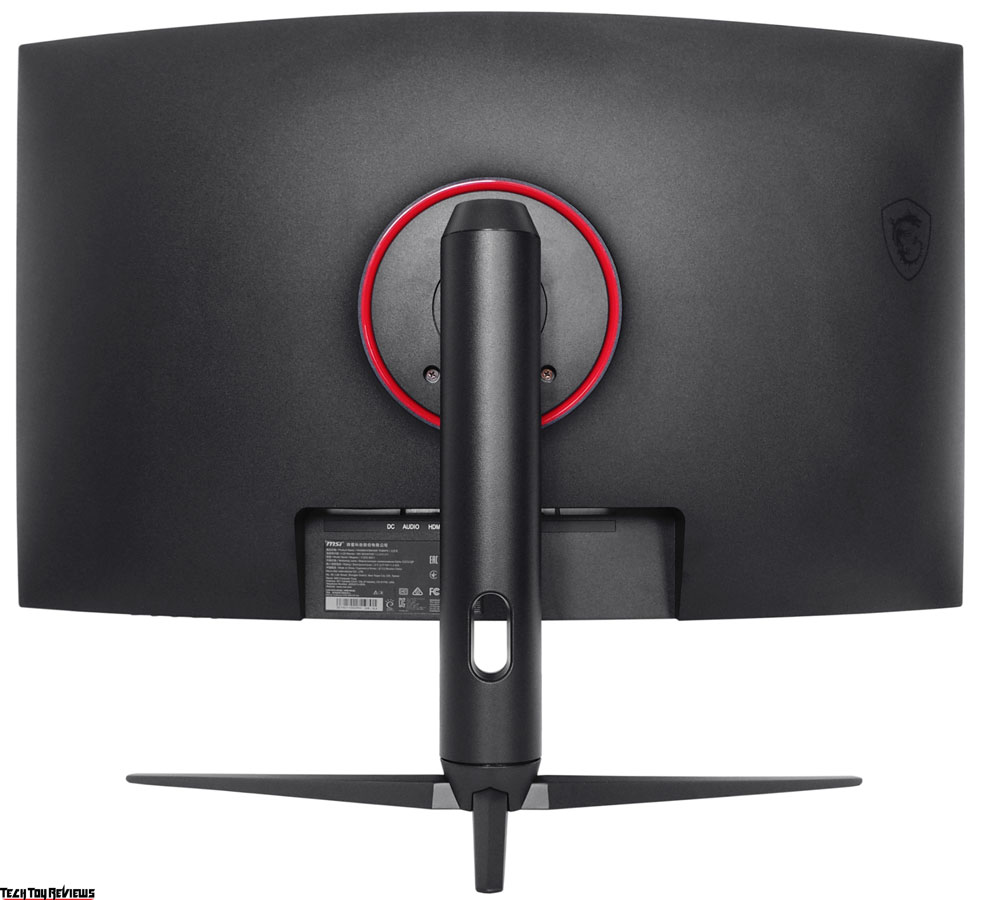
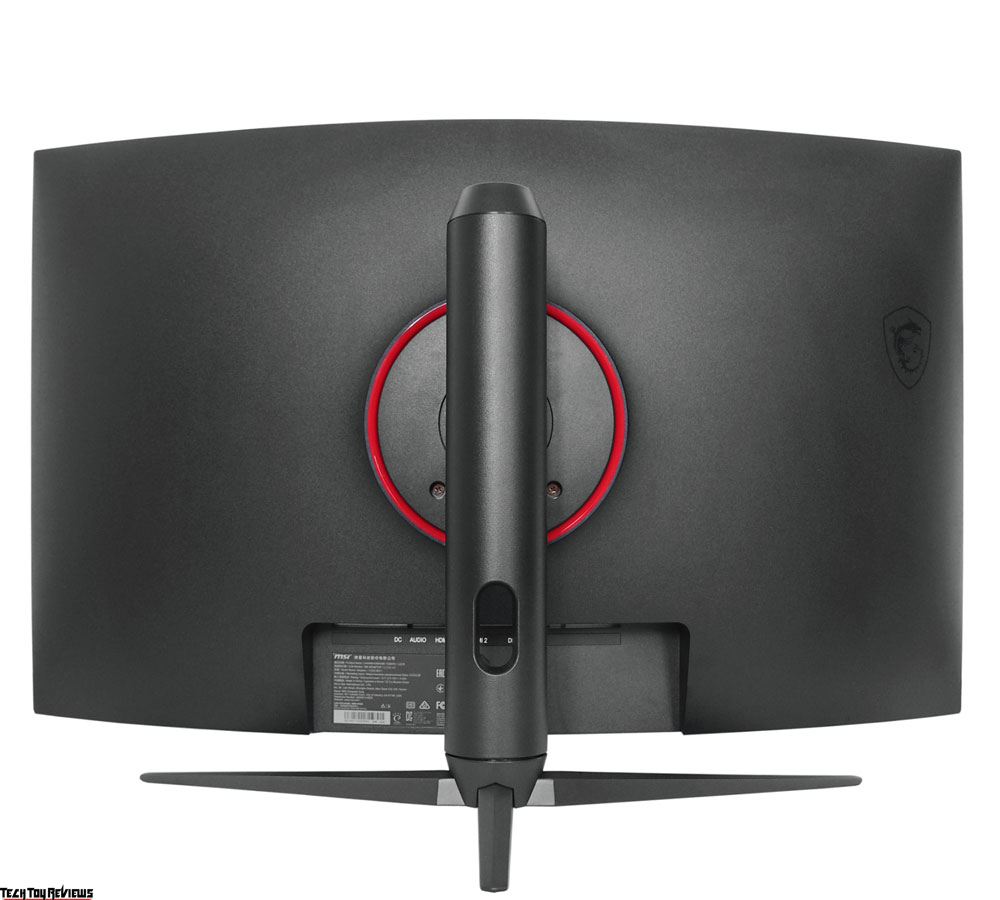
Ports include two HDMI 2.0, a DisplayPort 1.2a, and a 3.5mm audio jack. USB hub, built-in speakers, and external lighting are not provided.
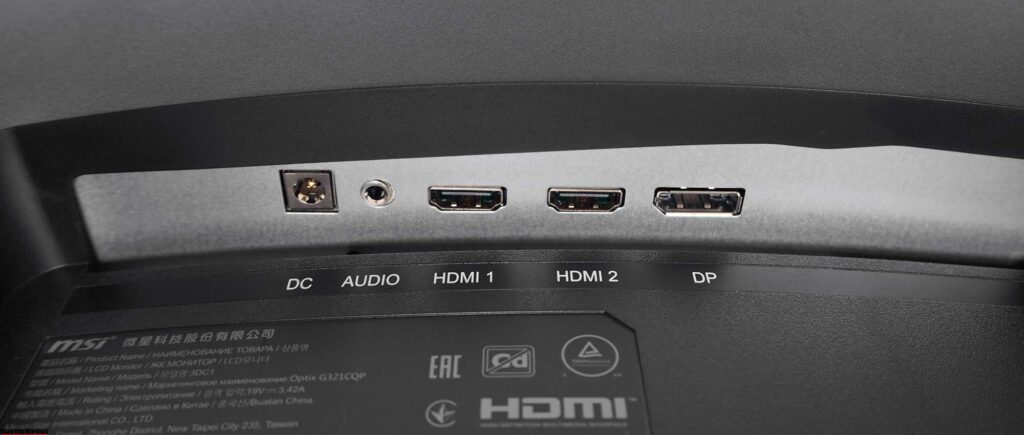
OSD menu
The first tab is Gaming. It allows you to select the gaming mode, night vision function, response time, MPRT, and zero latency mode. The Free Sync Premium adaptive synchronization system is also activated here.
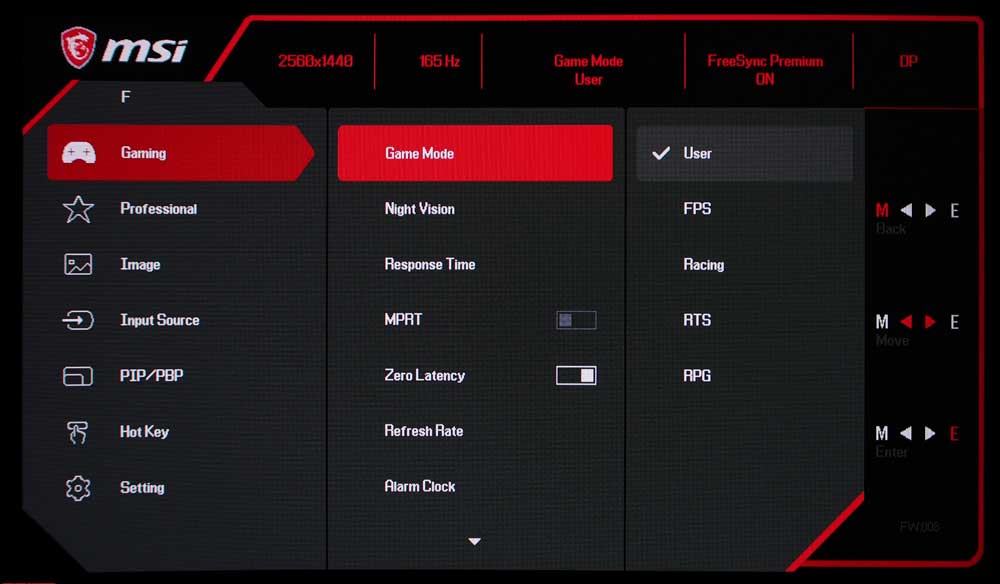
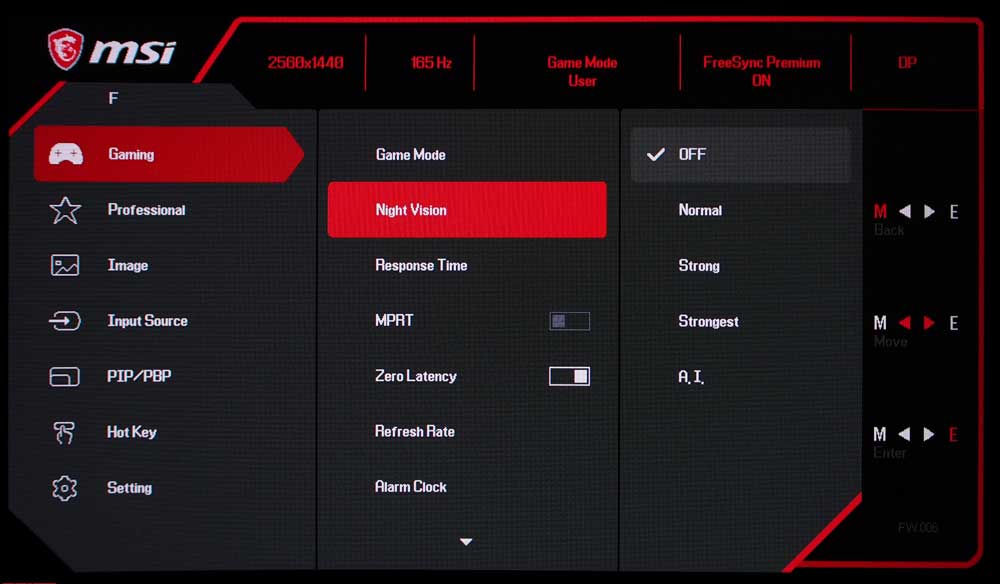
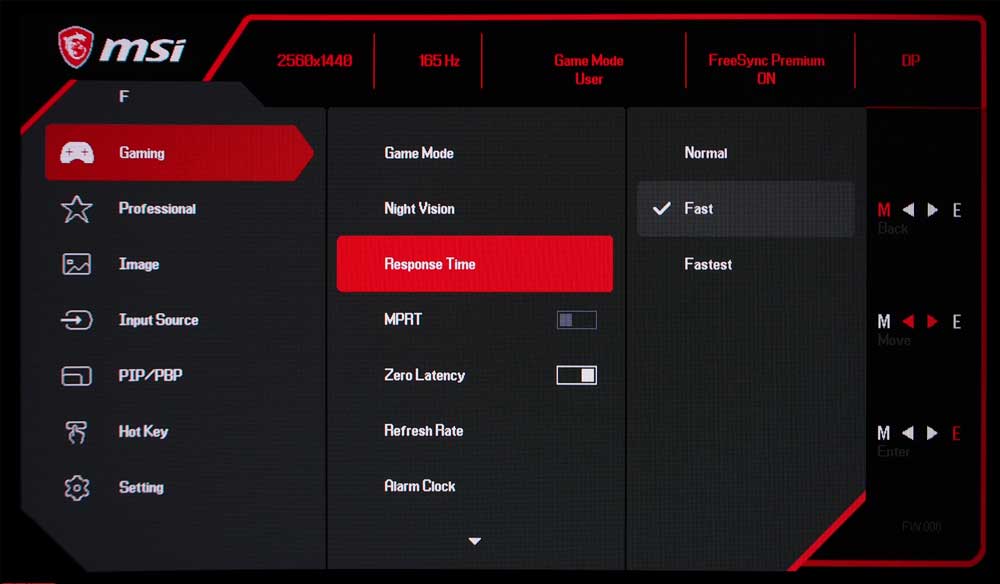
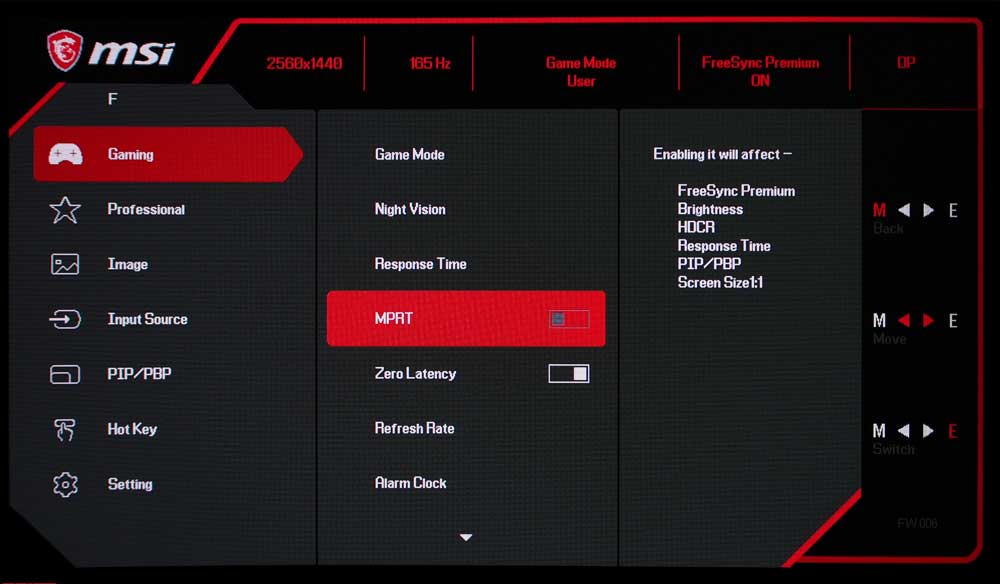
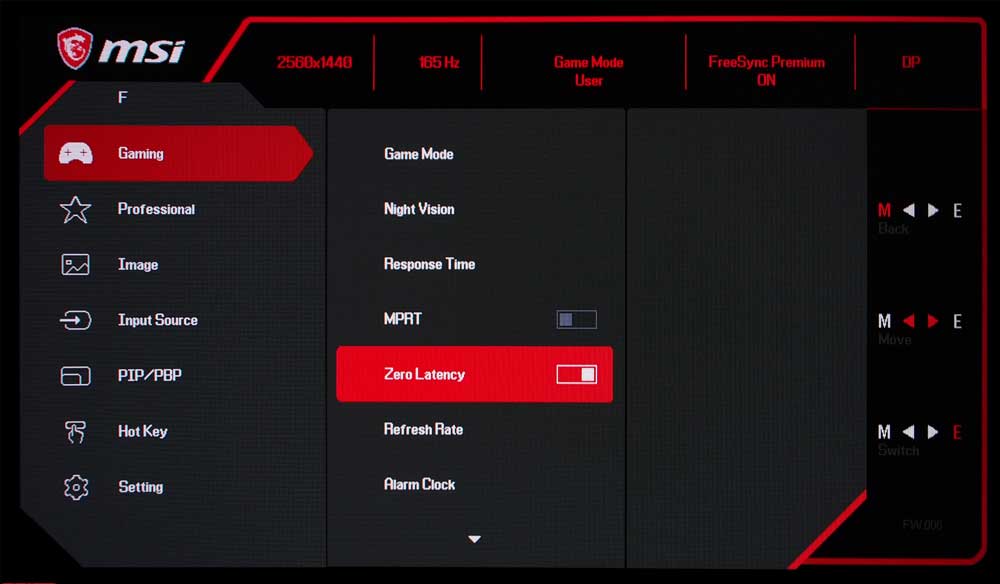
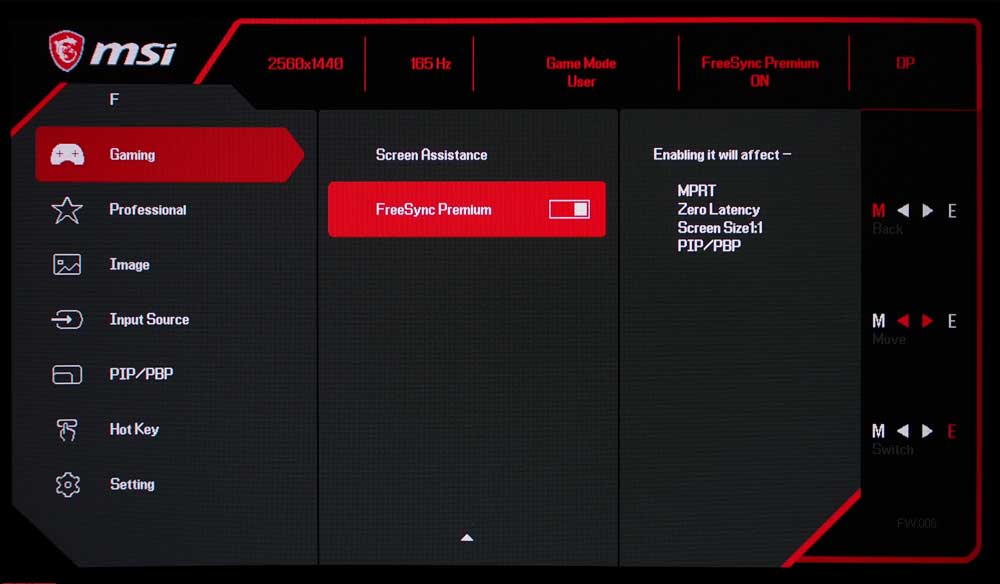
The Professional submenu contains various “enhancers”. The need for their use is questionable. The User mode turned out to be the most successful (not to be confused with User from the Gaming tab – these are different presets).
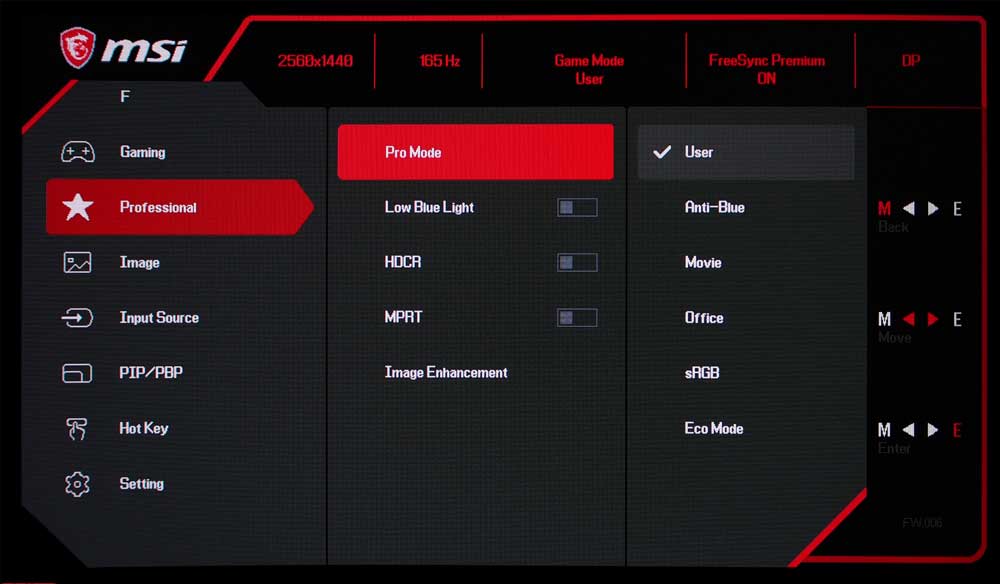
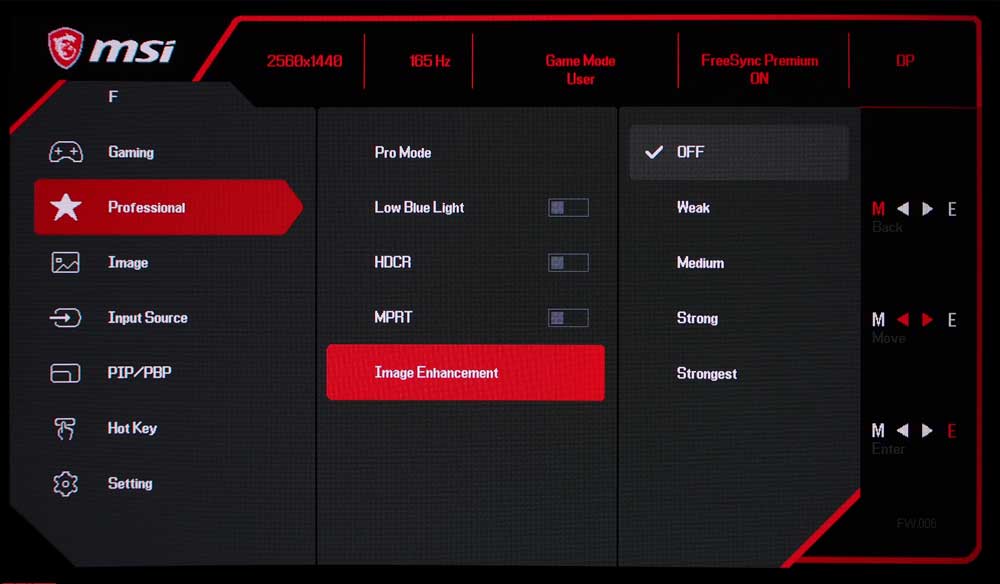
The Image tab section adjusts the main screen parameters: brightness, contrast, and sharpness. There is also a three-axis RGB setting. Without a calibrator, it is better not to touch these options (except brightness).
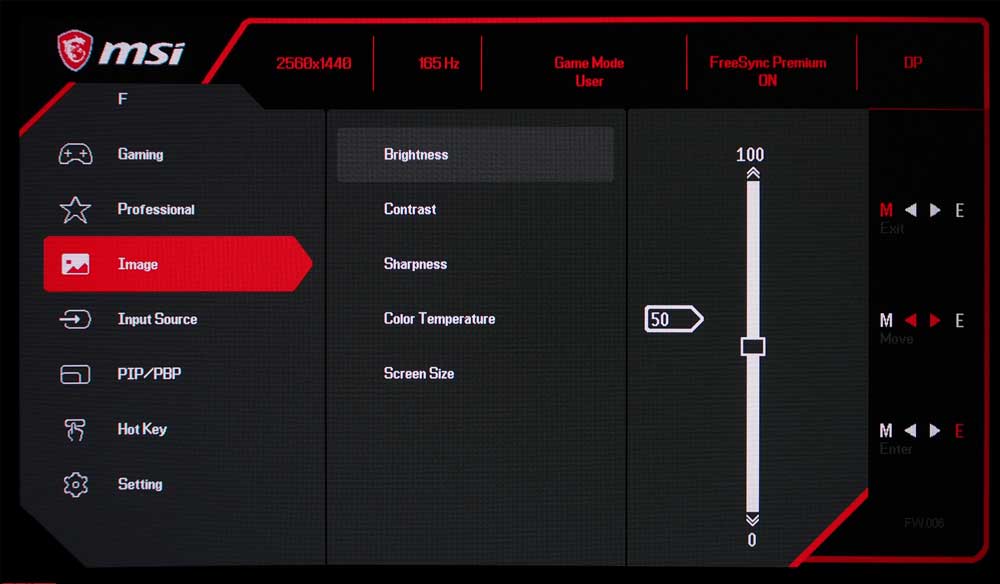
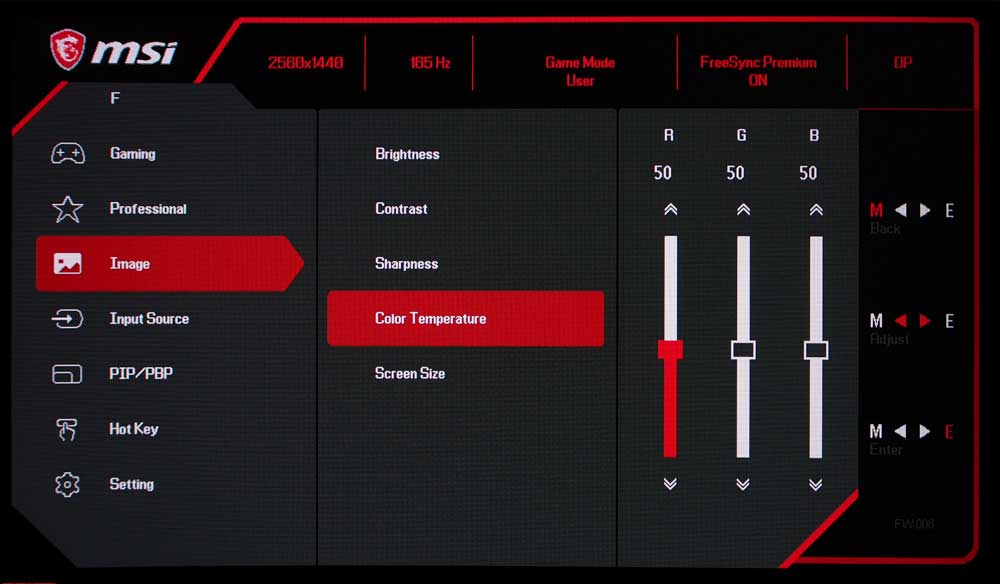
The Input Source tab is responsible for selecting the port (you can set auto scan). PIP/PBP activates the picture-in-picture function when using multiple signal sources. Hot Key allows you to assign quick commands to the right and left buttons.
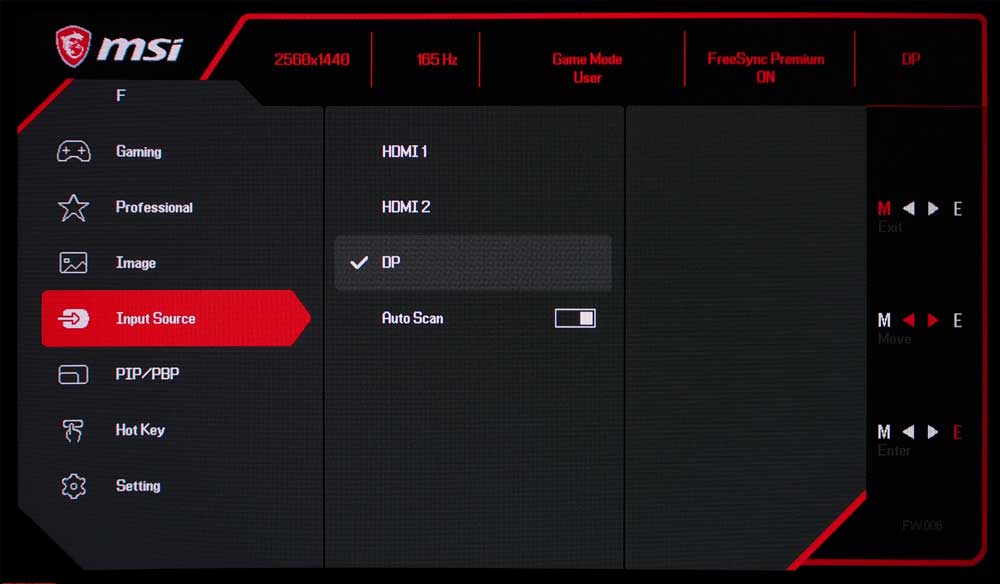
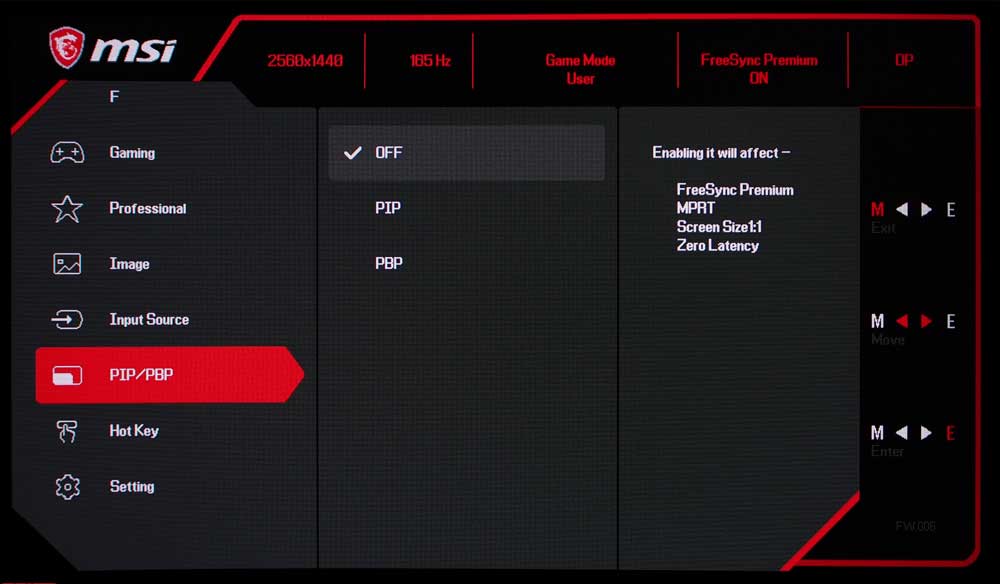
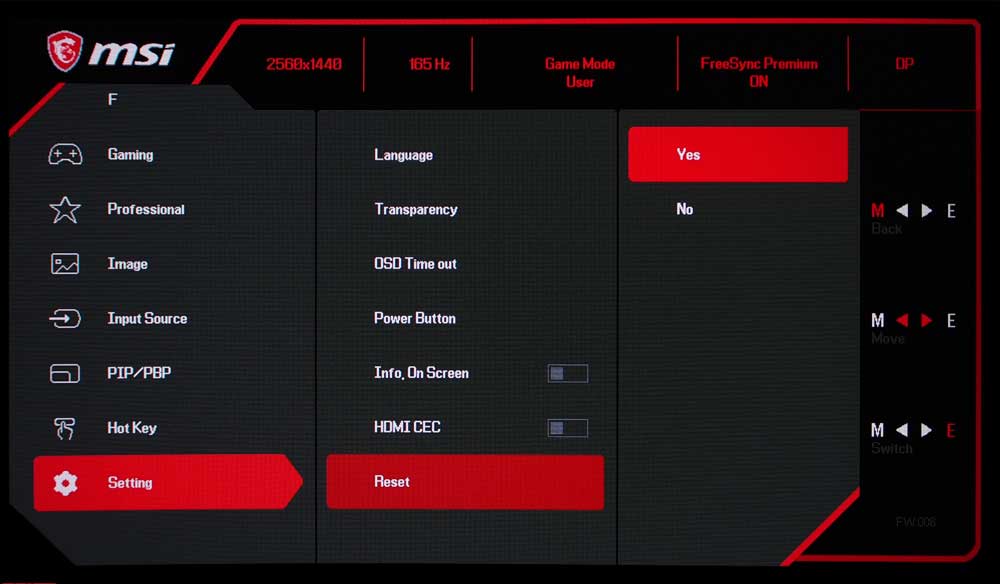
In Setting, it is worth highlighting perhaps the reset to factory settings.
Display
Our MSI Optix G321CQP review unit uses a pseudo-10-bit (8-bit + FRC) matrix M315DVR01 manufactured by AUO, which specializes in curved VA panels. The presence of quantum dots is not specified, but the extended color gamut is declared.
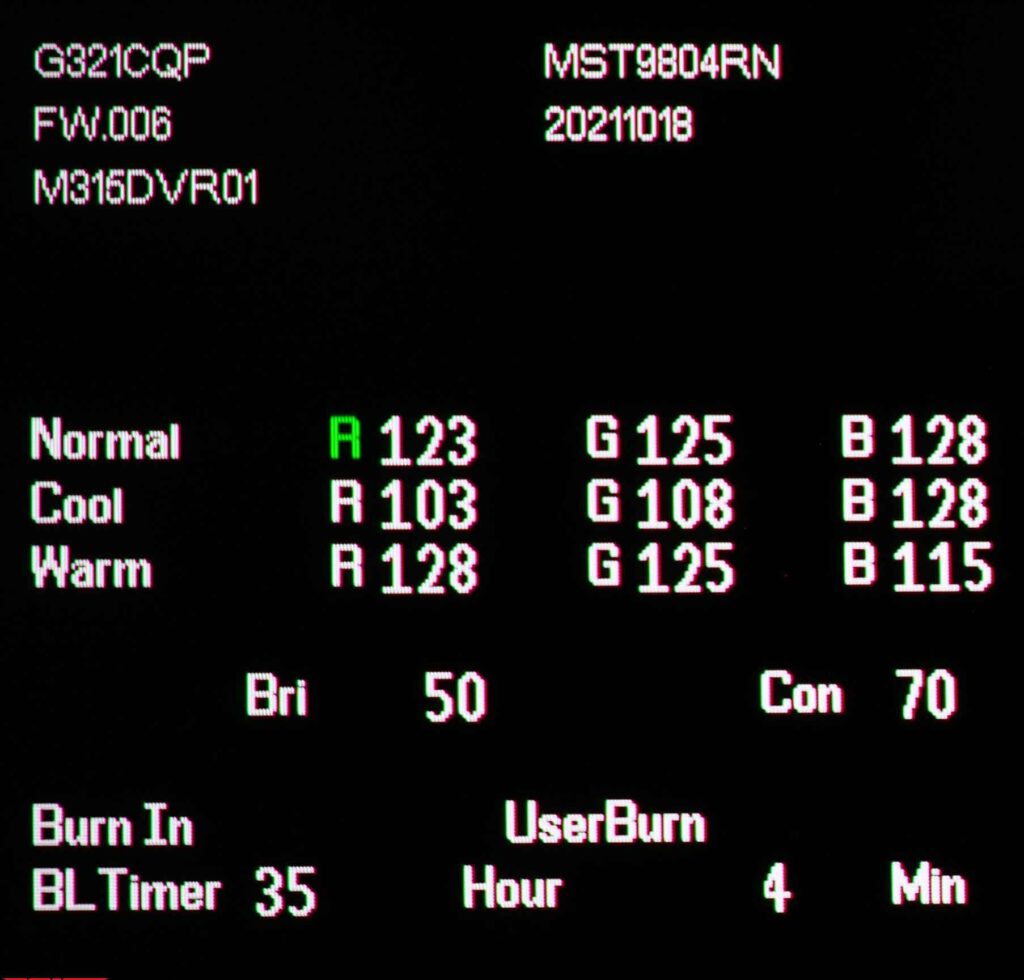
10-bit color depth allows you to display more than a billion color shades. The panel shows good gradients with smooth transitions.
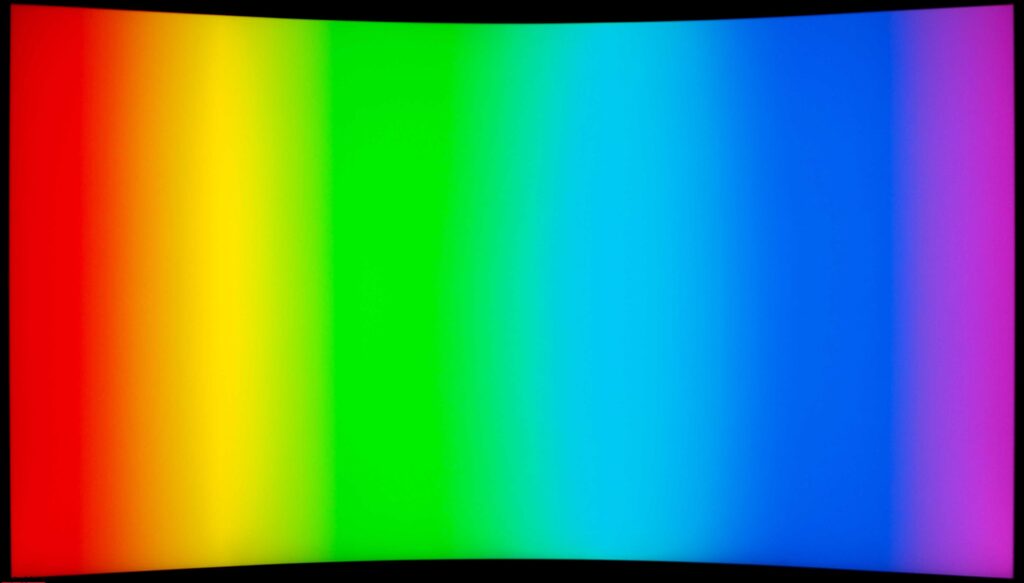
Viewing angles have never been the VA’s forte, but that hardly matters when it comes to the curvature of the 1000R. In front of such a screen, they sit only straight and alone. The same goes for the glow effect.

The black shade is weakly expressed. On the test chart below, black is visible from the third square. If you strain your vision, it will also appear from the second.

Claimed minimum response time is 1ms MPRT. Measured by the GTG method, this indicator is 4 ms. There are three response speed settings in the menu: Normal, Fast, and Fastest. It turned out to be difficult to single out the optimal one since the difference between them is practically not visible. In particular tests and scenarios, you may notice a slight ghosting (dark traces behind objects), so hardcore esports fans will want to evaluate this monitor live before buying. Overdrive (white halos of matrix overclocking) was not detected.

In the black frame insertion mode, the picture is clear, but the backlight strobe appears, the brightness is fixed at a value of about 135 nits, and the adaptive sync system is turned off.
Declared 165 Hz refresh rate, this monitor produces without problems. The main thing is to have an appropriate graphics card.
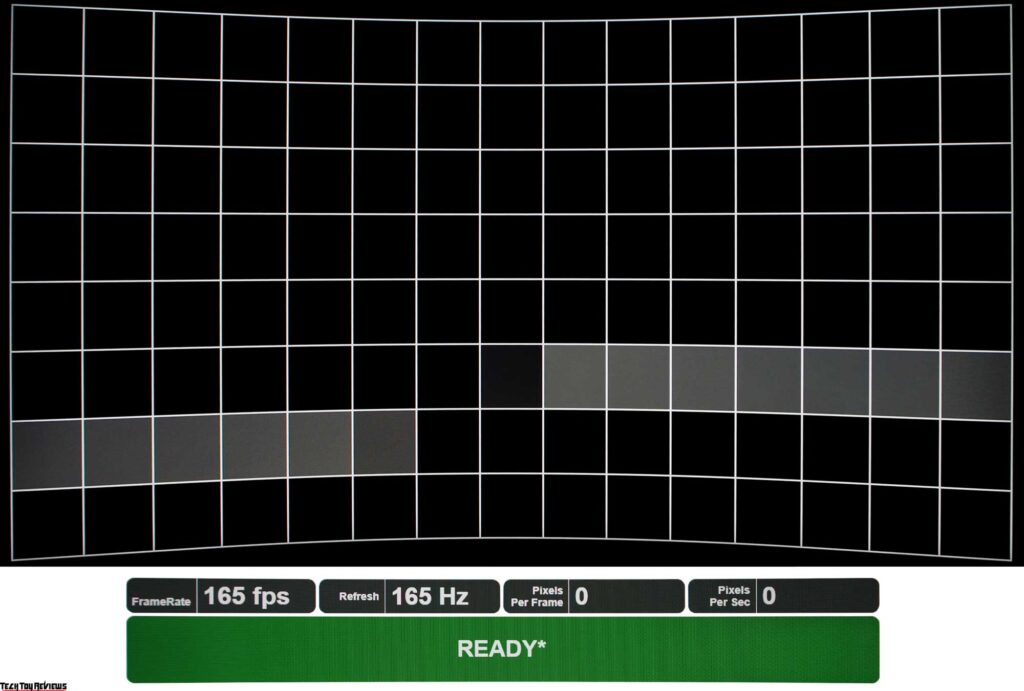
A semi-matte film is used to protect against glare. Practically, there is no crystal effect, and few people will look for it in a gaming display. Users who care about their eyes will appreciate having TÜV Rheinland certifications. The monitor has hardware protection that reduces the intensity of blue radiation.
MSI Optix G321CQP review test
Continuing our MSI Optix G321CQP review, we evaluate it with the DataColor Spyderx Pro Calibrator and Spyderxpro 5.6 software. Additionally, Argyll CMS 2.1.2, DisplayCAL 3.8.9.3, HCFR Colorimeter 3.5.2, and Gamutvision 1.4 programs were used.
The measurement results refer only to a specific example. Nevertheless, they help to create an impression of the capabilities of the model as a whole. The default mode is User, which we’ll focus on first. From the factory, the test sample is slightly “green”. For color work, this would be critical.
Backlight uniformity
The white background looks fairly uniform, however, there is slight shading around the edges. The tint is missing.

A hardware check of 25 zones according to the ISO 14861:2015 criterion showed a discrepancy along the left edge, which reached 20% in one area. It can hardly be called a good result, but it is quite forgivable for a gaming solution with a wide diagonal.
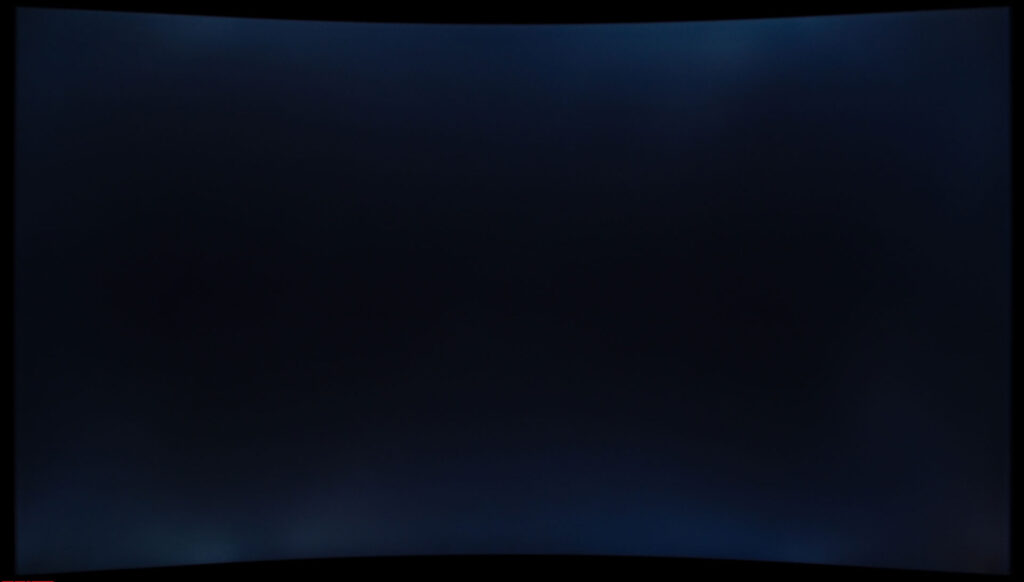
The black background of the tested monitor is shown in the photo below. Live light is practically invisible and does not stain on a dark tone.
Brightness, contrast, and white point
In User mode, the maximum brightness was 289 nits (against the declared 250 nits). The white point turned out to be close to the reference 6500 K, a little “colder” with increasing brightness. The maximum contrast ratio obtained is 1720:1, which is lower than the promised value of 3000:1.

At the same time, in HDCR mode, the MSI G321CQP easily overcomes the bar of 3300: 1, although it is cunning with dynamic contrast.

Activating eye protection does not drop contrast and brightness, lowering only the white point (up to 4200 K).

In MPRT mode, brightness is fixed at 137 nits, contrast is reduced to 1220:1.

The implementation of the Night Vision function is due to a strong decrease in contrast.

Measurements of the rest of the presets did not show anything interesting.
Gray scale and gamma
The regular User mode demonstrates the extended sRGB color gamut. The white point is slightly shifted towards cold shades. In gamma curves, as brightness increases, the effect of blue increases. The gray wedge is scattered. In User-sRGB mode, the picture is almost the same. The monitor did not want to narrow the color gamut.
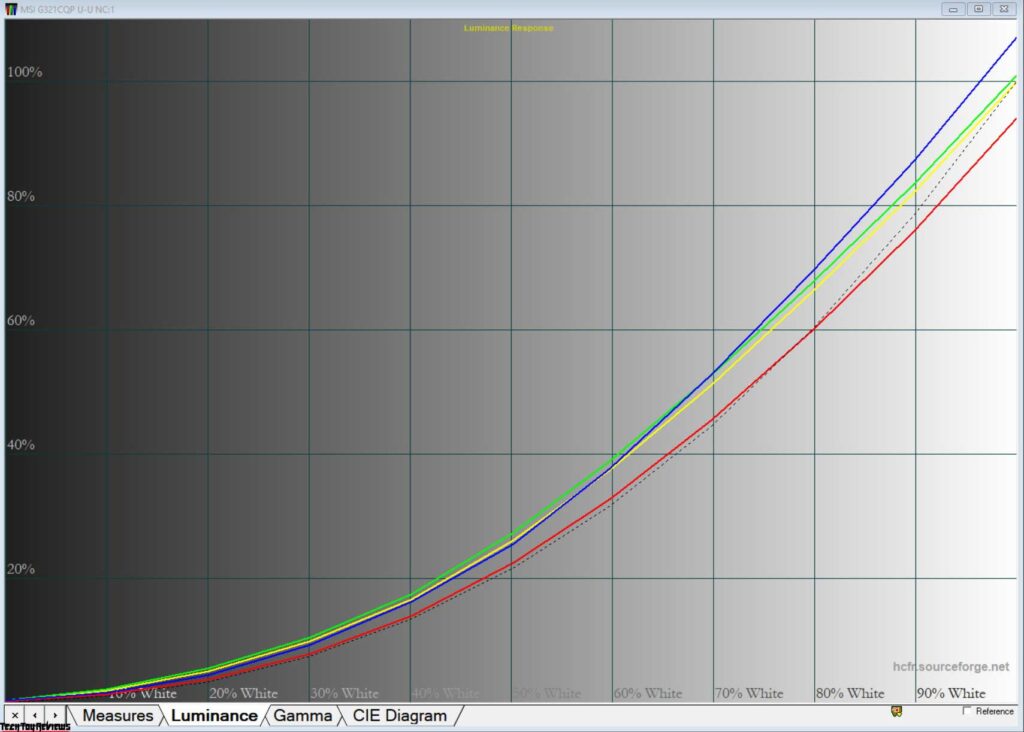
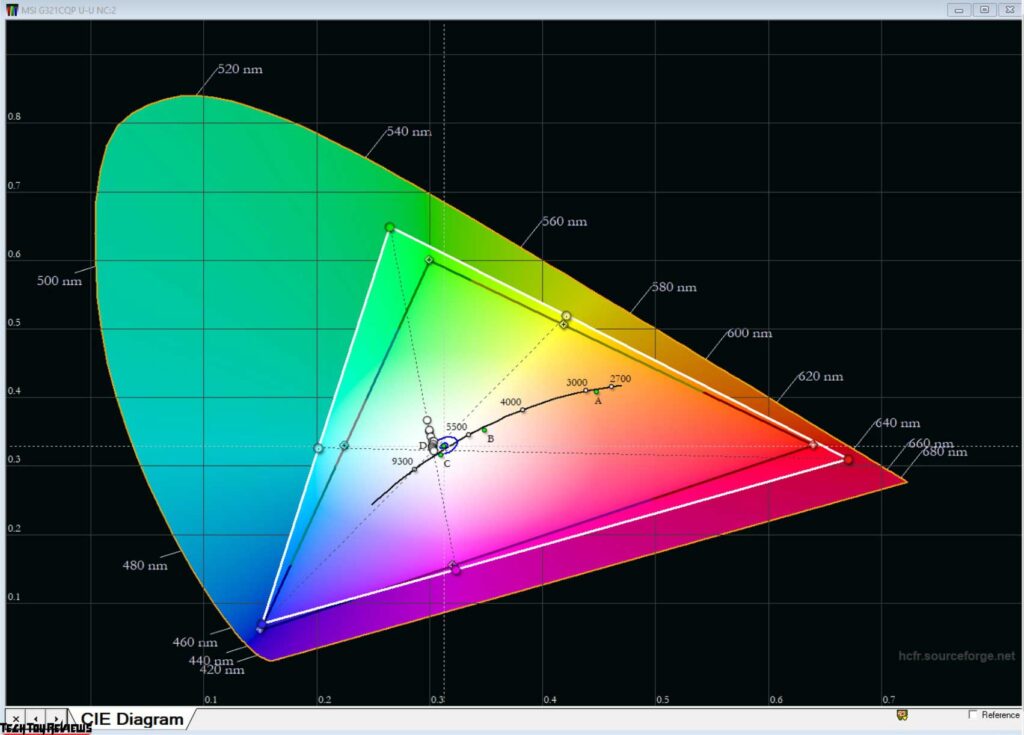
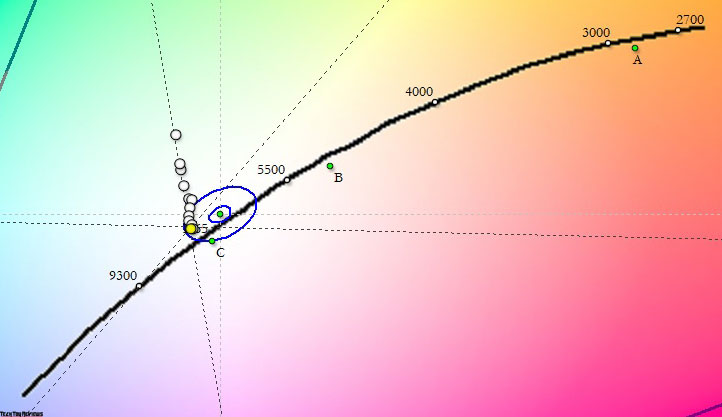
Low Blue Light habitually cuts the blue spectrum, which brings the monitor to a “warm” white point. The extended color gamut is preserved.
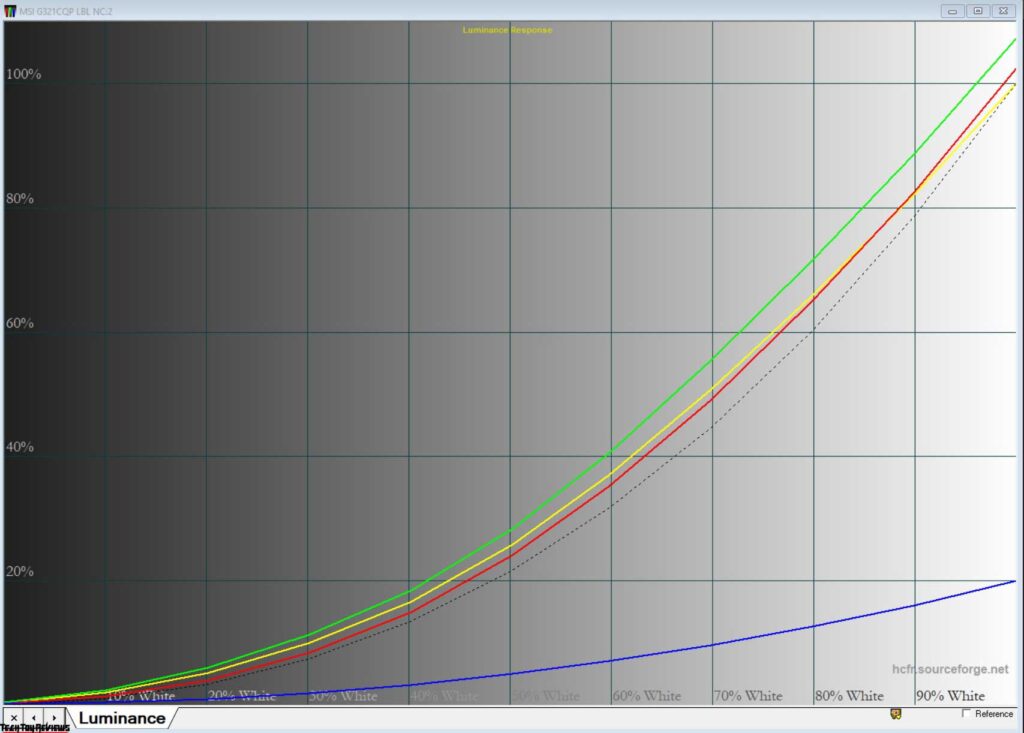
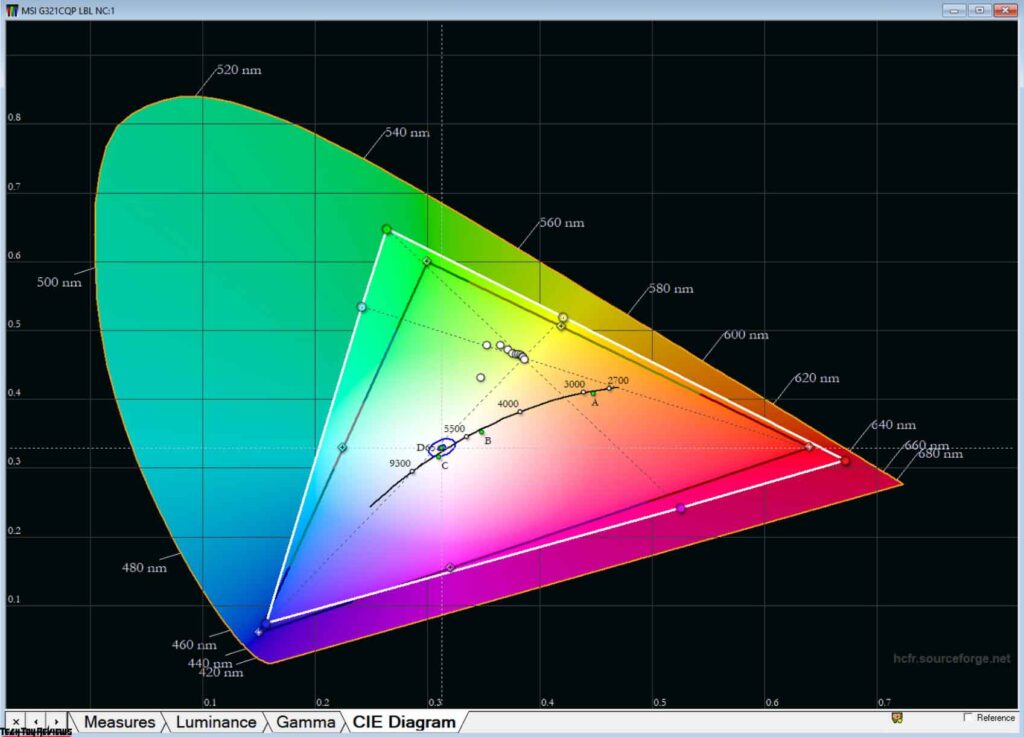
Color reproduction and calibration
The color gamut test results are shown below.
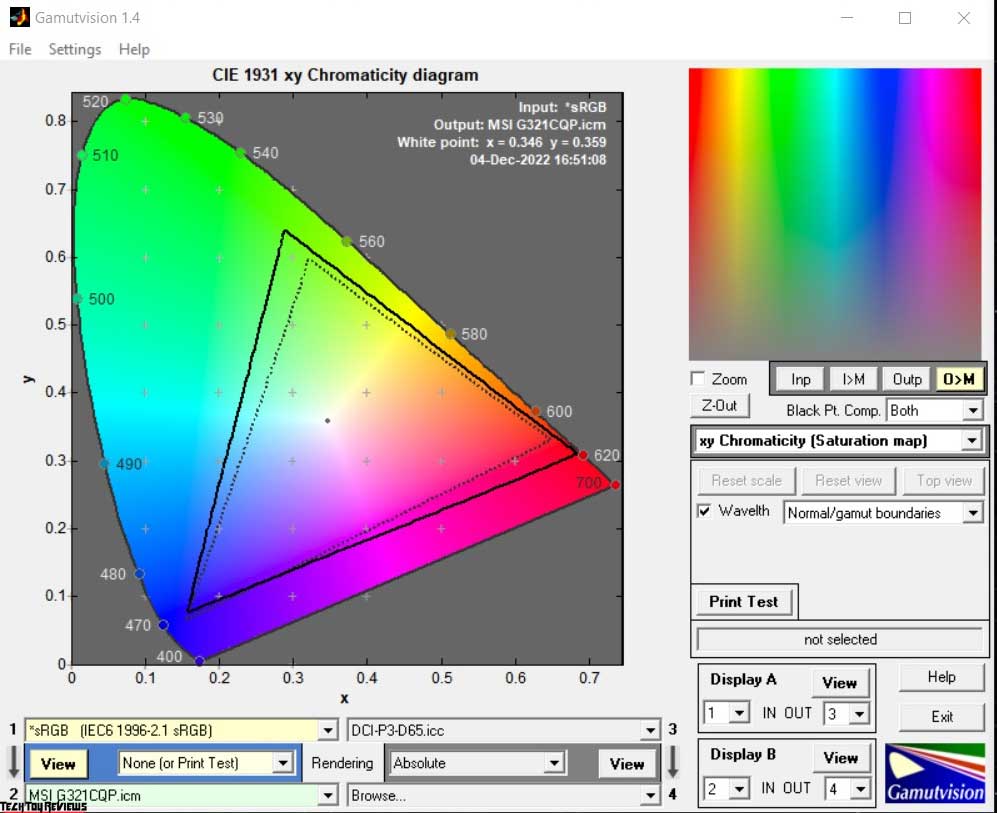
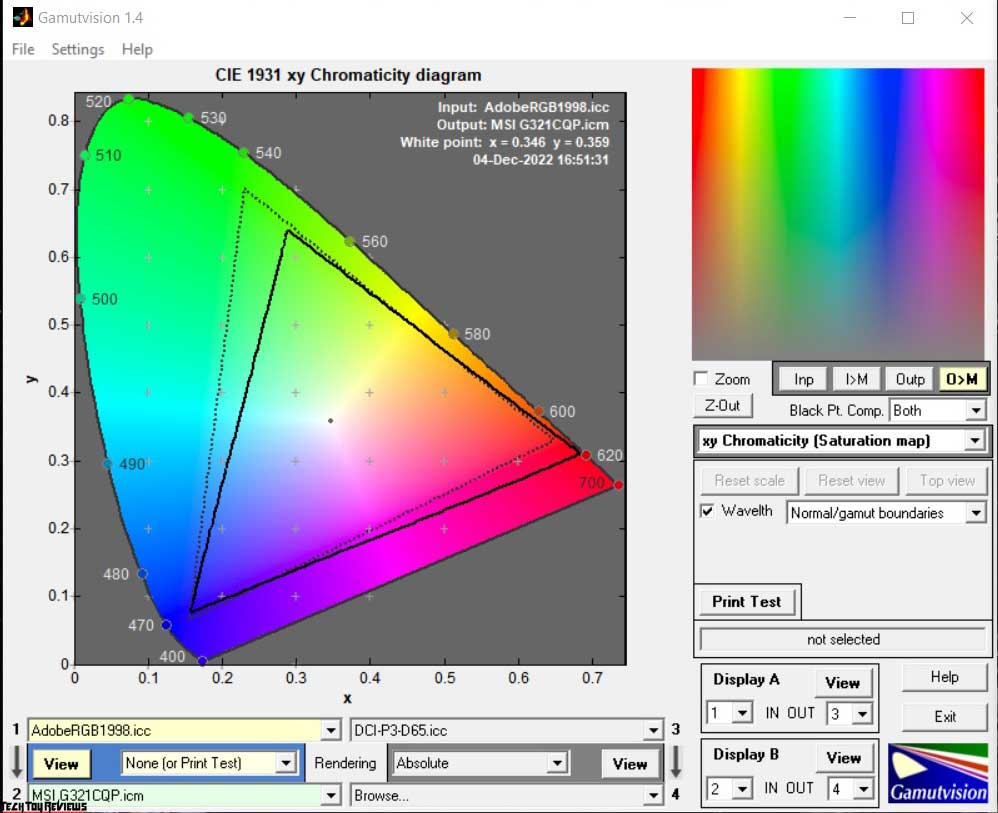
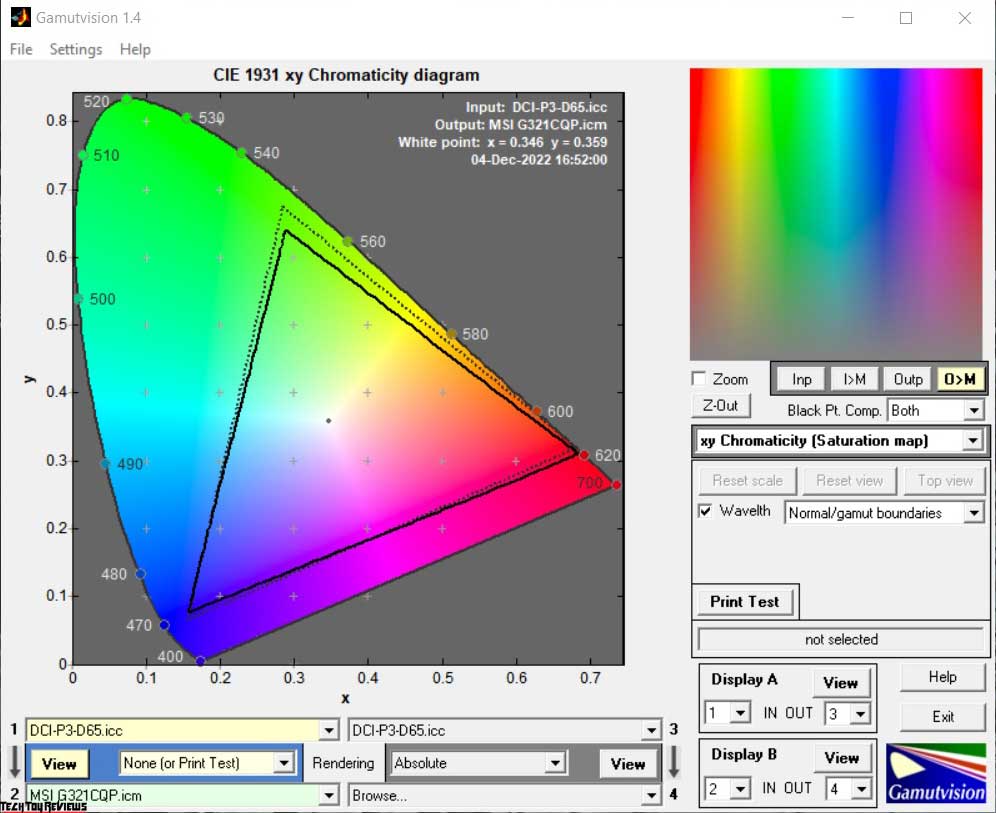
This MSI Optix G321CQP review unit is not factory calibrated. With the help of a calibrator, the color profile was corrected to ΔE < 2.
Features
The MSI Optix G321CQP has an optimal “gaming” diagonal of 32 inches, which gives excellent picture quality without the need for scaling at a resolution of 2560 × 1440 pixels. The capabilities of the monitor will be revealed by any modern graphics card from the mid-range segment. Support for consoles in 2K/120Hz mode is also there.
The high refresh rate of 165Hz allows you to get the most out of fast-paced competitive games. Night Vision mode enhances detail in dark scenes by reducing contrast. In gloomy games, it helps but worsens the quality of the picture as a whole.
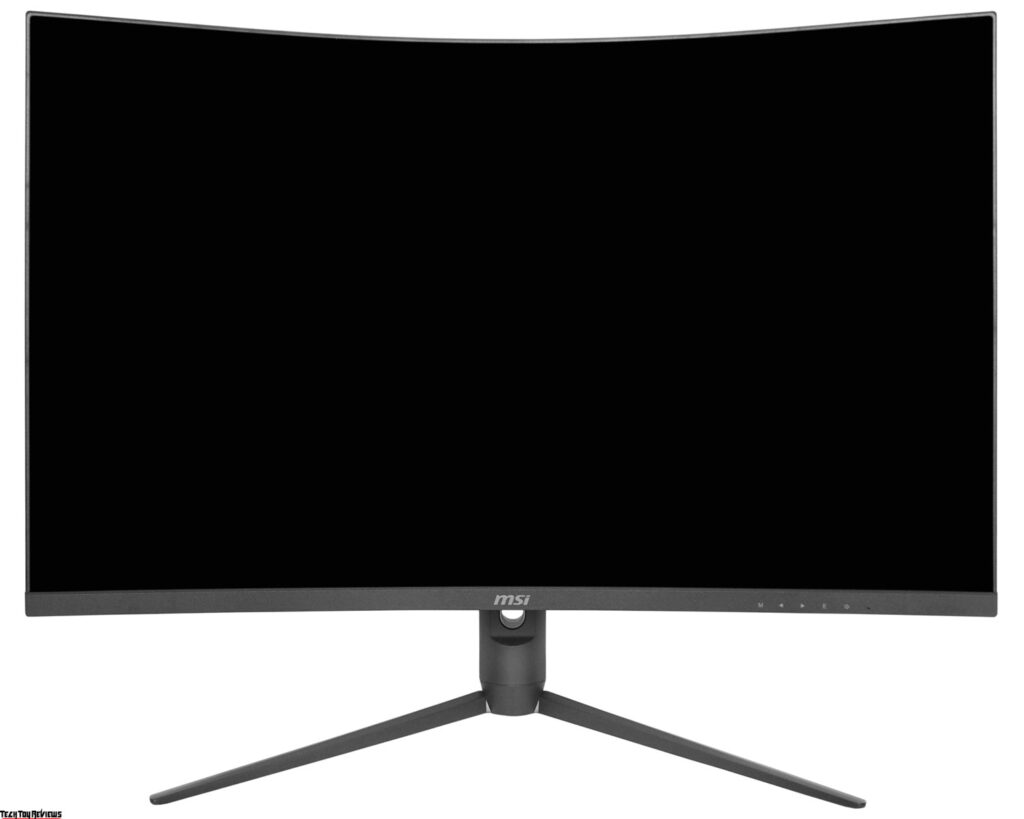
The adaptive sync system is AMD Freesync Premium. However, owners of Nvidia graphics adapters shouldn’t worry: it works with them too. When you enable the option in the OSD menu in the NVIDIA driver, the G-SYNC item appears. This MSI Optix G321CQP review unit had no problems with activation and correct operation. An important condition is a connection via DisplayPort.
On the wide curved screen, any movies and videos look good. As for HDR support, it’s not theoretically possible to implement it in this price range.
It will not work professionally with photography or in drawing programs. First, an ultrawide curve creates problems with perspective. Secondly, the color capabilities of the MSI G321CQP are not designed for content creation.
Finally, it is worth noting that the monitor can simultaneously display an image from two sources: both picture-in-picture (PIP) and picture-by-picture (PBP). How much this option is in demand is up to users to decide.
Final line
The MSI Optix G321CQP offers decent gaming performance without paying extra bucks. The wide curved panel is coupled with a QHD resolution and a high refresh rate of 165Hz. AMD FreeSync Premium provides a smooth gaming experience, while Anti-Flicker and Low Blue Light Pro take care of the user’s eyes. An excellent ergonomic stand will help you adjust the position of the display. A few disadvantages are the lack of a joystick and a built-in speaker system.
More importantly though, as a curved screen monitor for gaming, MSI’s 32 inch gaming monitor offering is just designed for budget users. The MSI Optix G321CQP was launched at an MRP of $359.99, but the price would eventually go down to $329.99 on Bhphotovideo.com and Adorama.com.
If you’re in the market for the best curved gaming monitor, you can get a 32-inch WQHD monitor with a 165Hz refresh rate. Admittedly, these will help you on the move, as they need to be always plugged in.
 Technology News, Reviews and Buying Guides review, monitor review, tablet review, laptop review, mobile review, smartphone review, buying guide,
Technology News, Reviews and Buying Guides review, monitor review, tablet review, laptop review, mobile review, smartphone review, buying guide,


